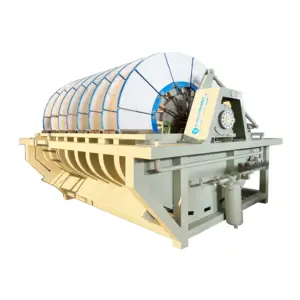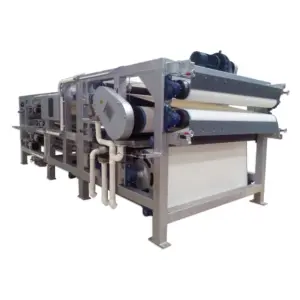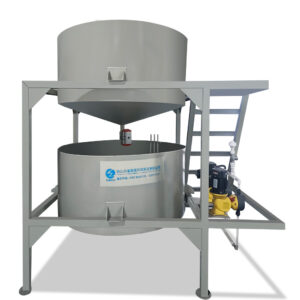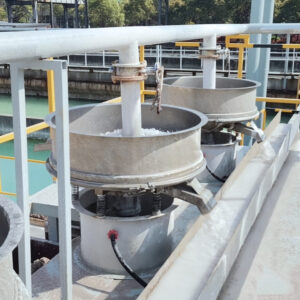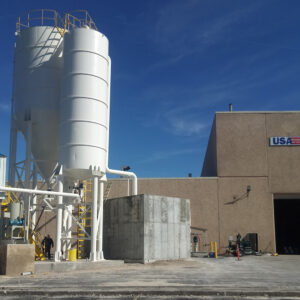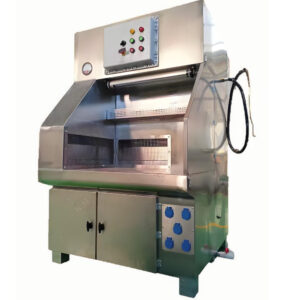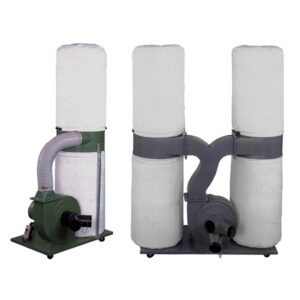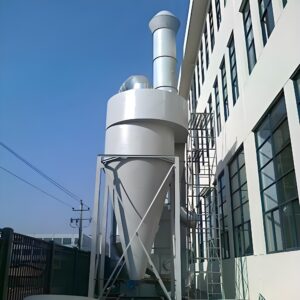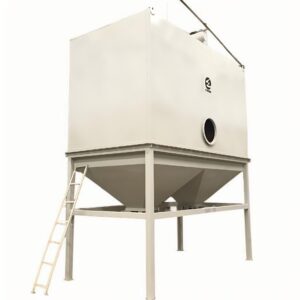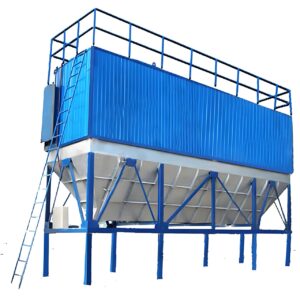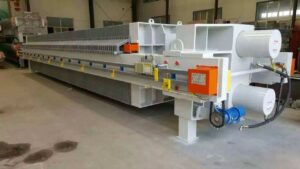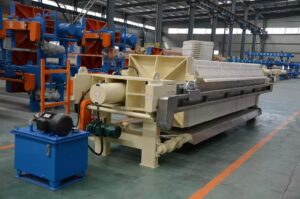The global water crisis has reached a tipping point, with over 2 billion people lacking access to safely managed drinking water, while industrial activities generate approximately 300-400 million tons of contaminated wastewater annually. For facility managers, environmental engineers, and business owners, this stark reality presents both urgent challenges and significant opportunities.
Without proper echipamente de tratare a apelor reziduale, facilities face mounting regulatory penalties, operational shutdowns, and reputational damage that can cost millions in lost revenue and legal fees. The consequences extend beyond immediate financial impact—inadequate treatment systems compromise community health, damage ecosystems, and create long-term liability exposure that threatens business continuity.
This comprehensive guide examines the critical types of wastewater treatment equipment, their specialized applications, and practical selection criteria that enable informed decision-making. You’ll discover proven technologies, cost-effective solutions, and emerging innovations that transform wastewater challenges into competitive advantages while ensuring regulatory compliance and environmental stewardship.
What is Wastewater Treatment Equipment and Why is it Critical?
Wastewater treatment equipment encompasses the mechanical, biological, and chemical systems designed to remove contaminants from domestic, industrial, and commercial wastewater streams. These systems transform polluted water into effluent that meets environmental discharge standards or enables safe reuse applications.
The critical importance of modern wastewater treatment extends far beyond regulatory compliance. According to the Environmental Protection Agency, proper treatment systems prevent an estimated 700 billion gallons of contaminated water from entering natural waterways annually, protecting both public health and ecosystem integrity.
PORVOO Clean Tech has observed that facilities implementing comprehensive treatment systems typically achieve 85-95% contaminant removal efficiency while reducing long-term operational costs by 30-40% through improved resource recovery and reduced waste disposal fees.
However, the complexity of wastewater composition presents ongoing challenges. Industrial facilities often generate streams containing heavy metals, organic compounds, and pH variations that require specialized treatment approaches. Municipal systems must handle fluctuating volumes and seasonal variations while maintaining consistent performance standards.
What are the Main Types of Wastewater Treatment Equipment?
Understanding the diverse categories of treatment equipment enables optimal system design and performance optimization. Each type serves specific functions within the overall treatment process, from initial screening to final polishing.
Primary Treatment Equipment
Primary treatment systems focus on physical separation and preliminary contaminant removal. Screening equipment removes large solids, debris, and floating materials through mechanical filtration processes. Modern screening systems achieve 40-60% suspended solids removal while protecting downstream equipment from damage.
Grit removal systems eliminate sand, gravel, and other heavy particles that can cause equipment wear and reduce treatment efficiency. These systems typically operate at detention times of 2-5 minutes, achieving 95% removal of particles larger than 0.2mm.
Sedimentation tanks represent the cornerstone of primary treatment, utilizing gravity settling to separate suspended solids from liquid streams. Rectangular and circular clarifiers can achieve 50-70% suspended solids removal and 25-40% biochemical oxygen demand (BOD) reduction under optimal conditions.
| Primary Equipment Type | Eficiența eliminării | Debit tipic | Frecvența întreținerii |
|---|---|---|---|
| Bar Screens | 15-30% TSS | 1-50 MGD | Săptămânal |
| Camere de gresie | 95% particles >0.2mm | 0.5-20 MGD | Lunar |
| Primary Clarifiers | 50-70% TSS | 1-100 MGD | Trimestrial |
Secondary Treatment Systems
Secondary treatment harnesses biological processes to decompose organic matter through controlled microbial activity. Activated sludge systems maintain carefully balanced populations of microorganisms that consume organic pollutants, achieving 85-95% BOD removal efficiency.
Trickling filter systems provide fixed-film biological treatment using media beds that support biofilm growth. These systems typically achieve 80-90% BOD removal while requiring lower energy inputs compared to activated sludge processes.
Rotating biological contactors (RBCs) offer reliable biological treatment for smaller facilities, with partially submerged rotating discs that optimize oxygen transfer and biomass contact. RBC systems demonstrate excellent performance stability and require minimal operator attention.
Tehnologii avansate de tratare
Membrane bioreactors (MBRs) combine biological treatment with membrane filtration, achieving superior effluent quality suitable for direct reuse applications. MBR systems consistently produce effluent with less than 5 mg/L suspended solids and 10 mg/L BOD.
Reverse osmosis systems remove dissolved salts, organic compounds, and trace contaminants through semi-permeable membrane separation. These systems achieve 95-99% removal efficiency for most dissolved constituents but require significant energy input and generate concentrate streams requiring disposal.
Advanced oxidation processes (AOPs) utilize ozone, UV radiation, or hydrogen peroxide to break down persistent organic compounds that resist conventional treatment. AOP systems prove particularly effective for pharmaceutical, pesticide, and industrial chemical removal.
How Does Industrial Water Treatment Equipment Differ from Municipal Systems?
Industrial wastewater treatment equipment must address unique challenges that distinguish it from municipal applications. The complexity and variability of industrial waste streams require specialized technologies and design approaches.
Scale and Capacity Considerations
Industrial facilities often experience dramatic flow variations based on production schedules, seasonal demand, and operational cycles. A typical manufacturing plant might generate 50,000 gallons during peak production and 5,000 gallons during maintenance periods, requiring flexible wastewater treatment systems with modular design capabilities.
Equipment sizing must accommodate these variations while maintaining treatment efficiency across the entire operating range. Equalization tanks provide flow buffering, typically sized for 6-24 hours of average daily flow to smooth out peak variations and optimize downstream treatment performance.
Specialized Contaminant Removal
Industrial processes generate specific contaminants requiring targeted treatment approaches. Metal finishing operations produce hexavalent chromium, requiring chemical reduction followed by precipitation and filtration. Pharmaceutical manufacturing generates complex organic compounds necessitating advanced biological treatment or chemical oxidation.
The food processing industry creates high-strength organic wastewater with BOD concentrations ranging from 1,000-10,000 mg/L, compared to typical municipal wastewater at 200-300 mg/L. This requires enhanced biological treatment capacity and specialized nutrient management systems.
| Sectorul industrial | Contaminanți cheie | Typical Treatment Approach | Effluent Standards |
|---|---|---|---|
| Metal Finishing | Heavy metals, cyanide | Chemical precipitation | <1 mg/L metals |
| Farmaceutice | Organic compounds, APIs | Advanced biological + AOP | <10 mg/L COD |
| Prelucrarea alimentelor | High BOD, fats/oils | Enhanced biological | <30 mg/L BOD |
| Textile | Dyes, surfactants | Coagulation + biological | Color removal >90% |
What Are the Key Applications of Wastewater Processing Equipment?
Modern wastewater processing equipment serves diverse applications across industrial, municipal, and agricultural sectors. Understanding these applications enables optimal technology selection and system design.
Producție și aplicații industriale
Chemical manufacturing facilities require robust treatment systems capable of handling toxic compounds, pH extremes, and variable loading conditions. A major petrochemical complex recently implemented a multi-stage treatment system combining oil-water separation, biological treatment, and advanced oxidation, achieving 99% contaminant removal while reducing disposal costs by $2.3 million annually.
Automotive manufacturing generates wastewater containing oils, heavy metals, and paint residues. Treatment systems typically incorporate dissolved air flotation for oil removal, followed by chemical precipitation for metals and biological treatment for organic compounds. These integrated systems achieve consistent compliance with discharge limits while enabling water reuse for non-contact cooling applications.
Municipal and Residential Use
Municipal wastewater treatment plants serve populations ranging from 1,000 to over 1 million people, requiring scalable technologies and robust operational reliability. Modern municipal systems increasingly incorporate nutrient removal capabilities to address phosphorus and nitrogen discharge limits, with biological nutrient removal processes achieving 80-90% total nitrogen removal.
Decentralized treatment systems serve smaller communities and individual facilities where centralized treatment proves economically unfeasible. Package treatment plants provide complete biological treatment in compact configurations, with capacities ranging from 500 to 50,000 gallons per day.
Agricultural and Food Processing
Agricultural applications focus on managing nutrient-rich wastewater from livestock operations and crop processing facilities. Anaerobic digestion systems treat high-strength organic waste while generating biogas for energy recovery, achieving 70-90% organic matter reduction and producing renewable energy valued at $0.08-0.15 per kWh.
Food processing wastewater contains high concentrations of organic matter, suspended solids, and nutrients. Treatment systems must handle seasonal variations, with some facilities experiencing 300-500% flow increases during harvest periods. Dissolved air flotation followed by biological treatment provides effective removal of fats, oils, and organic matter while managing these operational challenges.
How to Choose the Right Water Treatment Machinery for Your Needs?
Selecting appropriate water treatment machinery requires systematic evaluation of technical, economic, and operational factors. The decision-making process must balance performance requirements, capital costs, and long-term operational considerations.
Assessment Criteria and Performance Metrics
Effluent quality requirements establish the foundation for technology selection. Discharge permits specify maximum allowable concentrations for key parameters including BOD, suspended solids, nutrients, and metals. Treatment systems must consistently achieve these limits with appropriate safety margins to accommodate operational variations.
Flow characteristics significantly influence equipment selection and sizing. Peak flow rates determine hydraulic capacity requirements, while average flows establish sizing for biological treatment processes. Diurnal variations, seasonal patterns, and future growth projections all impact design parameters.
In our experience, facilities achieving optimal performance typically maintain 20-30% excess capacity above average design flows to accommodate variations and ensure consistent treatment performance. This approach reduces the risk of permit violations and provides operational flexibility for maintenance and expansion.
Cadrul de analiză cost-beneficiu
Capital costs represent only 20-30% of total lifecycle expenses for most treatment systems. Operating costs including energy, chemicals, labor, and maintenance typically dominate long-term economics. Energy consumption varies dramatically among technologies, with membrane systems requiring 2-8 kWh per 1,000 gallons treated compared to 0.5-2 kWh for conventional biological systems.
Maintenance requirements directly impact operational reliability and costs. Mechanical systems with rotating equipment require regular mechanical maintenance, while biological systems need ongoing monitoring and process optimization. A comprehensive maintenance program typically costs 3-5% of initial capital investment annually.
What Are the Latest Innovations in Wastewater Treatment Technology?
The wastewater treatment industry continues evolving through technological advancement and innovation. These developments focus on improving efficiency, reducing costs, and enhancing environmental sustainability.
Smart Monitoring and Automation
Advanced sensor technologies enable real-time monitoring of critical process parameters including dissolved oxygen, pH, turbidity, and specific contaminants. Smart monitoring systems reduce operator labor requirements by 40-60% while improving process control and treatment performance.
Artificial intelligence and machine learning algorithms analyze historical data patterns to predict equipment failures and optimize operational parameters. These systems can identify developing problems 2-4 weeks before traditional monitoring methods, enabling proactive maintenance and preventing costly breakdowns.
Energy-Efficient Solutions
Energy recovery systems capture waste heat and biogas from treatment processes, reducing overall energy consumption by 30-50%. Anaerobic membrane bioreactors combine biological treatment with energy generation, achieving net energy positive operation for high-strength waste streams.
Advanced aeration systems utilize high-efficiency blowers and fine-bubble diffusers to reduce aeration energy consumption by 20-40%. Variable frequency drives and automated control systems optimize energy usage based on real-time treatment requirements.
While these innovations offer significant benefits, implementation requires substantial capital investment and technical expertise. Facilities must carefully evaluate return on investment and ensure adequate technical support for successful deployment.
Concluzie
Effective wastewater treatment equipment selection and implementation represent critical success factors for modern facilities facing increasingly stringent environmental regulations and resource constraints. The comprehensive examination of treatment technologies, applications, and selection criteria presented here demonstrates the complexity and importance of informed decision-making in this essential field.
Key insights from this analysis include the fundamental importance of matching treatment technologies to specific waste characteristics, the significant economic advantages of properly designed systems, and the emerging opportunities presented by smart monitoring and energy recovery innovations. Understanding these factors enables facility managers to develop treatment solutions that achieve regulatory compliance while optimizing operational efficiency and cost-effectiveness.
The future of wastewater treatment lies in integrated approaches that combine proven technologies with innovative monitoring and control systems. Facilities implementing these comprehensive solutions consistently achieve superior performance while reducing environmental impact and operational costs. As regulatory requirements continue evolving and water scarcity increases globally, investment in appropriate treatment infrastructure becomes not just an operational necessity but a competitive advantage.
For facilities ready to implement or upgrade their treatment capabilities, comprehensive wastewater treatment systems provide the foundation for sustainable operations and regulatory compliance. The question is not whether to invest in proper treatment equipment, but how quickly you can implement solutions that transform wastewater challenges into operational advantages.
What specific treatment challenges does your facility face, and how might these technologies address your unique operational requirements?
Întrebări frecvente
Q: What is wastewater treatment equipment and why is it important?
A: Wastewater treatment equipment refers to the machinery and technologies used to remove contaminants from water that has been used in industrial, commercial, or residential processes. This equipment is crucial because it helps protect the environment and public health by treating wastewater to remove pollutants like solids, chemicals, and microorganisms before the water is released back into nature or reused. Proper wastewater treatment equipment ensures cleaner water discharge and compliance with environmental regulations.
Q: What are the main types of wastewater treatment equipment?
A: The primary types of wastewater treatment equipment include:
- Screens: Remove large solids and debris.
- Ultrafiltration systems: Use membranes to filter out fine particles and microorganisms.
- Pumps (submersible, centrifugal): Move water through the treatment process.
- Vacuum filters (drum, belt, disc): Separate solids from liquids.
- Centrifuges: Use centrifugal force to separate solids and liquids.
- Reverse osmosis systems: Remove dissolved impurities by forcing water through semipermeable membranes.
These types cover a wide range of applications depending on wastewater characteristics and treatment goals.
Q: How does ultrafiltration work in wastewater treatment equipment?
A: Ultrafiltration systems treat wastewater by pushing water through a semi-permeable membrane that traps suspended solids, bacteria, and some viruses, letting only clean water pass through. This process effectively reduces oily water content and removes fine particulates without chemical additives. Ultrafiltration is widely used in industries like food and beverage, pharmaceuticals, cosmetics, and detergents for efficient water recycling and reuse.
Q: Which industries commonly use wastewater treatment equipment and what challenges do they address?
A: Several industries rely on wastewater treatment equipment to manage their effluents:
- Textile: Removes dyes, chemicals, and organic matter.
- Pharmaceutical: Treats chemical residues and protects health and ecosystems.
- Oil and Gas: Separates oil, hydrocarbons, and harmful substances for safe water reuse.
- Mining: Handles mineral-laden wastewater to mitigate environmental impacts.
Each industry faces unique wastewater challenges that specialized equipment helps address to ensure compliance and sustainability.
Q: What are some advanced technologies in wastewater treatment equipment?
A: New technologies include:
- BioFiltro’s Biodynamic Aerobic System: Uses worms and microbes to remove up to 99% of contaminants quickly, producing nutrient-rich byproducts.
- Revolving Algal Biofilm Systems: Use algae to recover nutrients like nitrogen and phosphorus, converting them into slow-release fertilizers.
- Pellet-based nutrient removal: Targets phosphorus and nitrogen to reduce harmful algal blooms and improve water quality.
These innovations improve efficiency, sustainability, and resource recovery in wastewater treatment.
Q: Why are different types of pumps important in wastewater treatment equipment?
A: Pumps are essential for moving wastewater through various treatment stages. Different pumps include:
- Submersible pumps: Water-tight centrifugal pumps that handle large volumes efficiently.
- Progressive cavity pumps: Transfer slurry and thick liquids.
- Air pressure (pneumatic) pumps: Use gravity and air pressure to move wastewater.
- Circulation pumps: Maintain slurry flow within treatment plants.
- Booster pumps: Manage and increase water pressure.
- Agitator pumps: Supply energy to keep solids suspended for better treatment.
Each pump type is selected based on the specific demands of the wastewater and process design.
Resurse externe
- 7 common types of industrial wastewater equipment – Details key types of industrial wastewater treatment equipment, including ultrafiltration systems, vacuum evaporation, reverse osmosis, and specific technologies for energy efficiency and reliability.
- 7 Types of Wastewater Treatment Equipment. An Ultimate Guide – Comprehensive guide outlining main types of wastewater treatment equipment, their functions, and applications across industries such as textiles, pharmaceuticals, oil and gas, and mining.
- List of Wastewater Treatment Equipment – Provides an overview of various wastewater treatment equipment types, including vacuum filters, ultrafiltration systems, and their applications in different industrial sectors.
- 13 tehnologii noi care schimbă peisajul tratării apelor reziduale – Explores innovative wastewater treatment equipment and systems with modern applications, focusing on sustainability, efficiency, and new methods for nutrient and contaminant removal.
- Types of Pumps Used in the Wastewater Treatment Industry – Describes essential pump types used in wastewater treatment, such as submersible, progressive cavity, air pressure, circulation, and booster pumps, with explanations of their role in different processes.
- Industrial Wastewater Treatment Equipment Guide – Offers a general overview of wastewater treatment equipment types and their applications in various industries, highlighting design considerations and operational principles.
